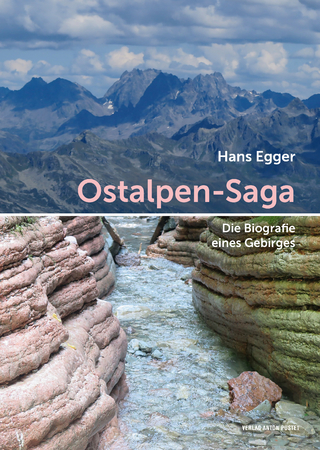
Entropy and Energy Dissipation in Water Resources
Springer (Verlag)
978-94-010-5072-2 (ISBN)
Section 1: Perspectives on Entropy and Energy Dissipation.- Entropy Optimization Principles and their Applications.- A Historical Perspective of Entropy Applications in Water Resources.- Force, Energy, Entropy, and Energy Dissipation Rate.- Versatile Uses of the Entropy Concept in Water Resources.- Limits in Space-Time Knowledge of Hydrological Data.- Random Walk between Order and Disorder.- Section 2: Application of Entropy in Hydrology.- On What Can be Explained by the Entropy of a Channel Network.- Transfer of Information in Monthly Rainfall Series of San Jose, California.- Application of Some Entropic Measures in Hydrologic Data Infilling Procedures.- An Investigation of the Feasibility Space of Parameter Estimation Using POME and ML with Reference to the TCEV Distribution.- Probabilistic Analysis of the Availability of a Hydrological Forecasting System (HFS).- Section 3: Application Of Entropy In Water Resources.- Assessing the Reliability of Water Distribution Networks Using Entropy-Based Measures of Network Redundancy.- Optimizing Water Distribution Network Design Using Entropy Surrogates for Network Reliability.- The Role of the Entropy Concept in Design and Evaluation of Water Quality Monitoring Networks.- Application of the Entropy Concept in Design of Water Quality Monitoring Networks.- Maximum Entropy Techniques in Inverse and Environmental Problems.- Section 4: Application Of Entropy In Hydraulics.- Applications of Probability and Entropy Concepts in Open-Channel Hydraulics.- A New Energy-Based Approach to Local Bridge Scour.- First and Second Law Analysis of a Hydro Storage with Respect to the Environmental Impact of an Energy System.- Maximum Entropy Principle and Energy Dissipation through Permeable Breakwaters.- Section 5: Application Of Energy Principles In Hydrology.- On What is Explained by the Form of a Channel Network.- Analysis of Spatial Variability of River Network Morphology, Flow and Potential Energy.- Flow Resistance Induced by Overland Flow Morphology.- The Priming and Duration of Droughts.- Section 6: Application of Energy Principles in Hydraulics.- The Role of Energy Dissipation in Fluid Flows and River Mechanics.- Energy Loss in Dividing Flow.- Wave Type Flow at Abrupt Drops: Flow Geometry and Energy Loss.- Some Considerations on Velocity Profiles in Unsteady Pipe Flows.- Analysis of the Seepage Process in Clay Slopes Intercepted by Trench Drains.- Dynamic and Variational Approaches to the River Regime Relation.- Are Extremal Hypotheses not Consistent with Regime Alluvial Channels?.- Statistical Quantities Distribution in Turbulent Flows and the Use of the Entropy Concept.- Vortex Ring-Moving Sphere Chaotic Interaction.
| Reihe/Serie | Water Science and Technology Library ; 9 |
|---|---|
| Zusatzinfo | XI, 597 p. |
| Verlagsort | Dordrecht |
| Sprache | englisch |
| Maße | 160 x 240 mm |
| Themenwelt | Naturwissenschaften ► Geowissenschaften ► Geologie |
| Naturwissenschaften ► Geowissenschaften ► Hydrologie / Ozeanografie | |
| Naturwissenschaften ► Physik / Astronomie ► Mechanik | |
| ISBN-10 | 94-010-5072-4 / 9401050724 |
| ISBN-13 | 978-94-010-5072-2 / 9789401050722 |
| Zustand | Neuware |
| Haben Sie eine Frage zum Produkt? |
aus dem Bereich


